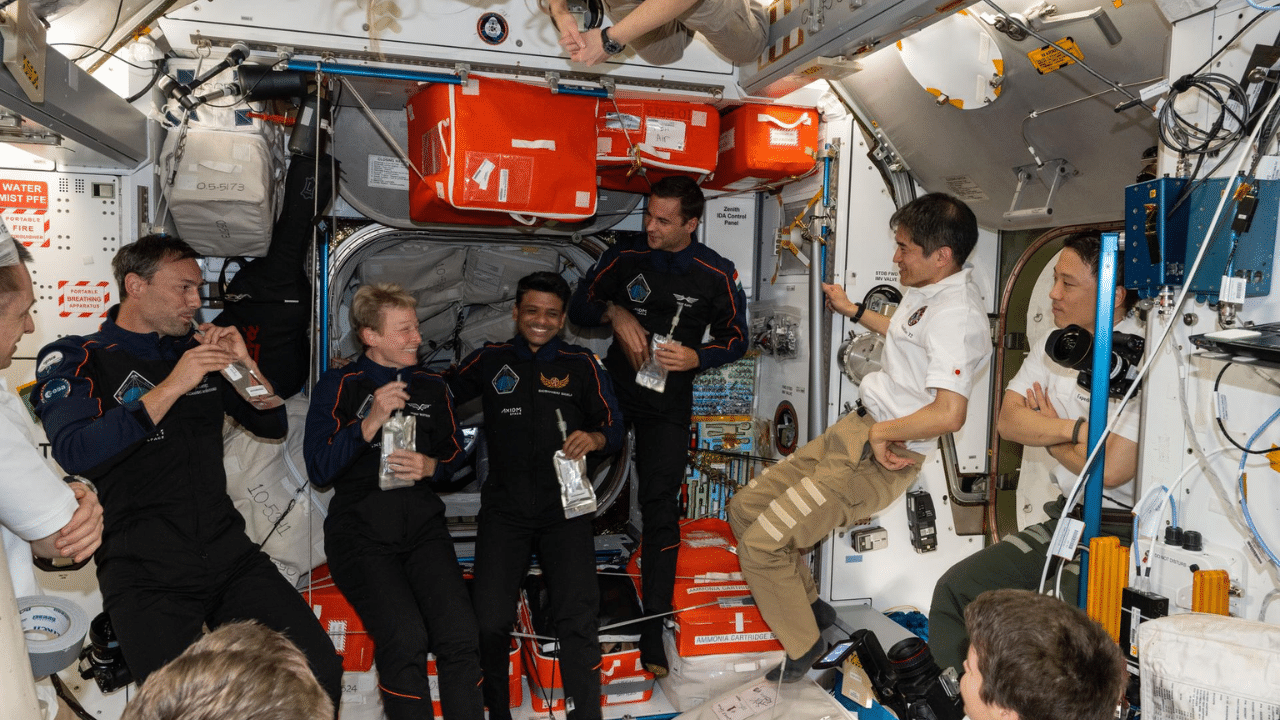New Delhi: The International Space Station (ISS) was busy with scientific activity on Tuesday as the 11 astronauts aboard Expedition 73 and Axiom Mission 4 (Ax-4) returned to work. They included learning about brain circulation in microgravity, analysing cancer cells and developing space biotechnology. The day also saw the launch of the uncrewed Progress 90 cargo craft, which had been in orbit for seven months ferrying goods to the orbiting lab.
JAXA astronaut and station commander Takuya Onishi was in charge of some experiments aimed at determining the amount of blood flowing through the heart and the brain. He was clad with sensors on his neck and chest in order to measure the effect of microgravity on circulation. At the same time, Peggy Whitson and Tibor Kapu, the AX-4 astronauts, conducted a similar study, but Kapu employed a Doppler ultrasound cap and a pressure cuff. This is to safeguard the visual perception and the functioning of the brain when on long missions in space.
Cancer cell imaging and microscopic tardigrades
Whitson later explored cancer cells in space with the aid of a fluorescence microscope. Her work is devoted to early detection and prevention strategies. Anne McClain and Nichole Ayers (NASA astronauts) enabled the experiments with the support of the Ax-4 crew members. McClain led the astronauts along the science hardware activities, and Ayers readied a microscope in the Destiny module for Ax-4 astronaut Shubhanshu Shukla. He observed tardigrades in it, microscopic creatures surviving the most extreme conditions, including microgravity.
Ax-4’s Sławosz Uznański-Wiśniewski studied the wearable nanomaterials to monitor the health of astronauts. In the meantime, NASA astronaut Jonny Kim was taking blood samples in the company of Onishi and storing them in the science freezer in the station. Kim was also involved in maintenance activities within the Harmony module and was also involved in the upgrade of air ventilation components in the Quest airlock.
Progress 90 departs, Progress 92 awaits launch
At 2:42 p.m. EDT, the Progress 90 spacecraft undocked with the Poisk module of the station, and its stay on the station was completed as it was filled with rubbish that could be disposed of safely. It will be burnt over the South Pacific Ocean. It will be replaced by Progress 92, which is prepared at Baikonur Cosmodrome in Kazakhstan and is expected to launch at 3:32 p.m. EDT, Thursday. On Saturday, the spacecraft is expected to dock with the ISS carrying about 3,000 pounds of supplies.
Sergey Ryzhikov and Alexey Zubritskiy of Roscosmos practised remote-controlled docking of Progress 92. Ryzhikov also obtained hyperspectral photos of Mexico and South America, whereas Zubritskiy took photos of the launching Progress 90. Cosmonaut Kirill Peskov tested systems involved in the work of the robotic arm and passed a session of health monitoring with heart and blood pressure.
